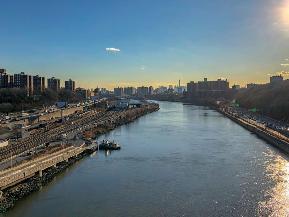NEW YORK CITY-The fall of the 47-story World Trade Center building 7 in New York City late in the afternoon of 9/11, was primarily due to fires, the Commerce Department’s National Institute of Standards and Technology revealed last week following a three-year scientific and technical building and fire safety investigation. Skeptics have questioned if explosives were planted at the tower, though according to the report, this was the first known instance of fire causing the total collapse of a tall building. However, other issues brought up in the report–involving new guidelines and improvement suggestions–raise further questions, according to a source.
Karen Kozlowski, a partner in the real estate department of Sullivan & Worcester LLP, tells GlobeSt.com that while the report states that the partial or total collapse of the building due to fires was a rare event, the NIST still “urge building owners, operators and designers to evaluate [existing] buildings to ensure adequate fire performance of the structural system.” She notes that seems a bit like 20/20 hindsight, adding that the bigger question is how it will affect the industry. “Will tenants now require landlords to do such an evaluation? Will insurance companies, prior to insuring buildings, require such an evaluation? How will developers get construction loans on a going forward basis? Will they be required to comply with existing standards …suggested by NIST?” she wonders. “Plus, won’t the cost of developing new buildings be so much greater if developers are required to comply with these new standards?”
One building owner has already jumped on board with new safety guidelines. Building owner, Silverstein Properties Inc., implemented structural and life-safety measures in the rebuilding of 7 WTC, which, according to a prepared statement, “set a new standard in modern skyscraper design –a standard that is being carried through to every tower we are building at the new World Trade Center.”
The safety measures Silverstein is referring to for the newly rebuilt 7 WTC include: increased robustness and redundancy of steel; two-foot think reinforced concrete walls to protect the building’s core for the full height of the tower; and a laminated, structurally fortified wall as well as columns in the building lobby serve as a blast shield. Safety enhancements as far as evacuation is concerned include: exit stairs are 20% wider than required by NYC building codes; four fire stairways exit directly to the outside; widely-separated stairs are equipped with emergency lighting and glow-in-the-dark paint and are pressurized and smoke-purged to resist the intrusion of smoke. The “new standard in modern skyscraper design,” that was mentioned in the statement include: fireproofing material used to protect the steel structure that is 10 times as adhesive and twice as thick as required by building codes; dual standpipes and water storage capacity for the building sprinkler system that are double that required by code; and a fresh air intake system located at the top of the tower, which includes multiple levels of filters.
The 12 recommendations reiterated from the WTC towers investigation address several areas, including specific improvements to building standards, codes and practices; changes to, or the establishment of, evacuation and emergency response procedures; and research and other appropriate actions needed to help prevent future building failures.
In response to Kozlowski’s queries, a NIST source tells GlobeSt.com that none of its recommendations are yet mandated or required by any outside body. A Sept. 15th deadline for public comment is set for the report, and standards-setting bodies “are expected to offer their positions on the recommendations in the report.” The source continues that one of the new recommendations in the report is that “building standards and codes be strengthened beyond their current intent to achieve life safety to prevent structural collapse even during infrequent building fires like those in WTC 7 when sprinklers do not function, do not exist, or are overwhelmed by fire.”
Kozlowski also says that it is interesting to note that “based on the new guidelines suggested by the NIST for possible options in developing cost-effective fixes to structural issues, these fixes are going to cost significant money.” She wonders who will bear the expense of the new cost, and how the new “fixes” will change in the cost of leasing in Manhattan.
The NIST also recommended several improvements to the building codes and standards in evacuation and emergency response procedures. Kozlowski says that although it is a great idea, she wondered how it will be accomplished. Will the legislature just do it or will they take some input from landlords, tenants and developers, she questions.
In its recommendations, NIST suggests that its findings be taken with “urgency” since they are pertinent “to the collapse of a tall building that was based on a structural system design that is in widespread use.”





 Copyright © 2024 ALM Global, LLC. All Rights Reserved.
Copyright © 2024 ALM Global, LLC. All Rights Reserved.











